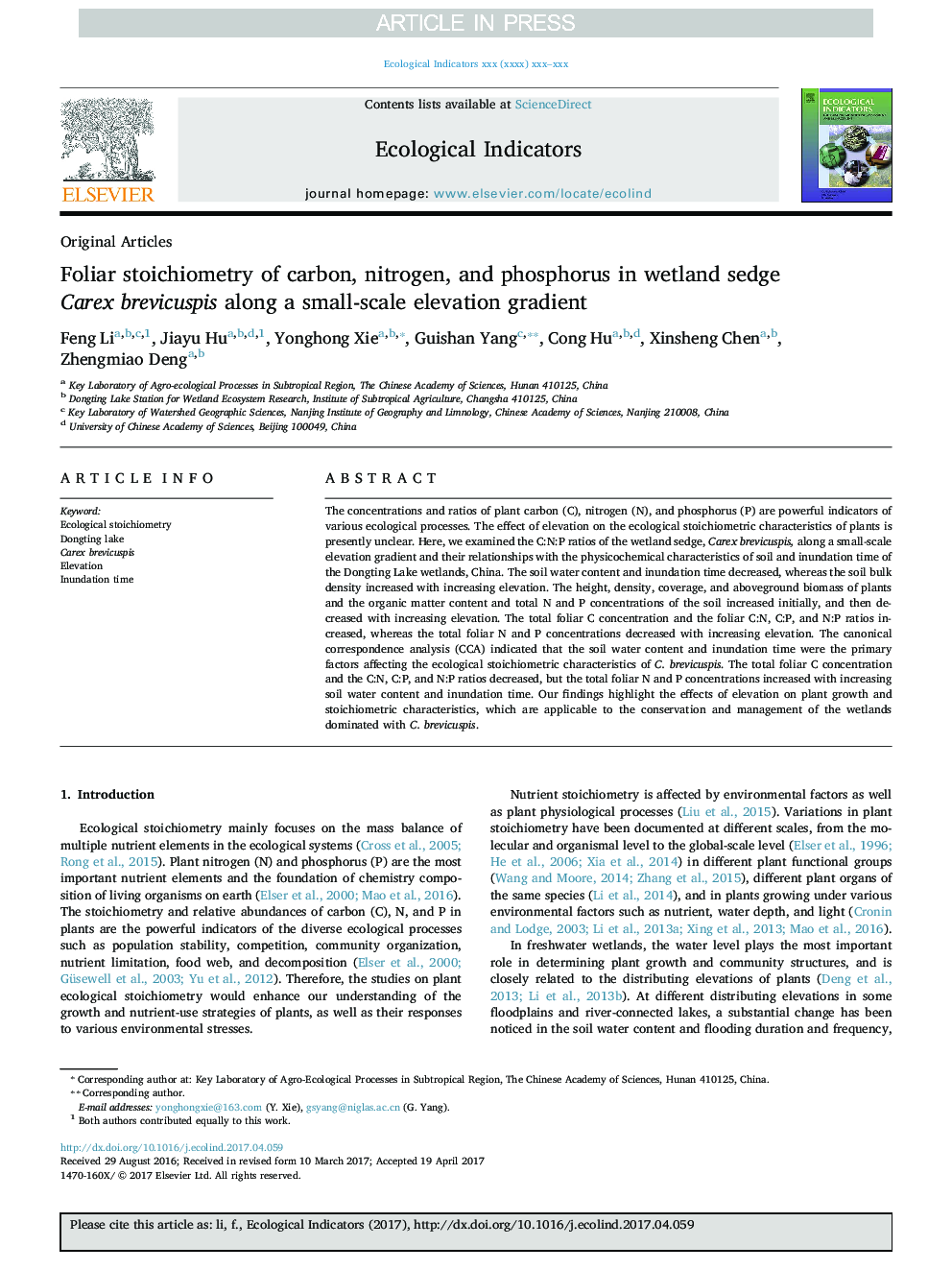| Article ID | Journal | Published Year | Pages | File Type |
|---|---|---|---|---|
| 8845269 | Ecological Indicators | 2018 | 8 Pages |
Abstract
The concentrations and ratios of plant carbon (C), nitrogen (N), and phosphorus (P) are powerful indicators of various ecological processes. The effect of elevation on the ecological stoichiometric characteristics of plants is presently unclear. Here, we examined the C:N:P ratios of the wetland sedge, Carex brevicuspis, along a small-scale elevation gradient and their relationships with the physicochemical characteristics of soil and inundation time of the Dongting Lake wetlands, China. The soil water content and inundation time decreased, whereas the soil bulk density increased with increasing elevation. The height, density, coverage, and aboveground biomass of plants and the organic matter content and total N and P concentrations of the soil increased initially, and then decreased with increasing elevation. The total foliar C concentration and the foliar C:N, C:P, and N:P ratios increased, whereas the total foliar N and P concentrations decreased with increasing elevation. The canonical correspondence analysis (CCA) indicated that the soil water content and inundation time were the primary factors affecting the ecological stoichiometric characteristics of C. brevicuspis. The total foliar C concentration and the C:N, C:P, and N:P ratios decreased, but the total foliar N and P concentrations increased with increasing soil water content and inundation time. Our findings highlight the effects of elevation on plant growth and stoichiometric characteristics, which are applicable to the conservation and management of the wetlands dominated with C. brevicuspis.
Related Topics
Life Sciences
Agricultural and Biological Sciences
Ecology, Evolution, Behavior and Systematics
Authors
Feng Li, Jiayu Hu, Yonghong Xie, Guishan Yang, Cong Hu, Xinsheng Chen, Zhengmiao Deng,
